When beekeepers in the state of Mato Grosso do Sul complained that giant armadillos (Priodontes maximus) were destroying their beehives, Arnaud Desbiez was dubious. Research showed that giant armadillos feed almost entirely on ants and termites, not honey. But the video camera traps revealed a surprising truth.
“Lo and behold, we saw that giant armadillos were actually knocking over beehives,” Desbiez, the conservation biologist and president of the Wild Animal Conservation Institute (ICAS), told Mongabay by phone. “It’s not eating the honey, it’s eating the bee larvae. But it means it destroys the honeycombs. It destroys everything.”
For the giant armadillos, it’s an easy protein-rich meal. For the beekeepers, it means a loss of livelihood, leading some to poison the armadillos in retaliation. To minimize this human-wildlife conflict, Desbiez came up with a solution: armadillo-friendly honey.
“We decided to find a way to promote coexistence between beekeepers and giant armadillos,” he said. Beekeepers who adopt mitigation measures to protect their hives from giant armadillos while ensuring no harm comes to the species receive an armadillo-friendly honey certificate that they can add to their products to notify buyers and boost the honey’s value.
“The certification provides a greater added value to the honey, so we can sell it at a better price,” Antonio Adames, a beekeeper in the Brazilian Cerrado savanna who is involved in the Armadillo & Honey Project, told Mongabay. With the certificate, Adames said that he sells his armadillo-friendly honey for 20% more than regular honey. For those who sell their honey at local markets, the project incentivizes them to protect armadillos by supplying them with queen bees, which are more valuable for smallholder beekeepers than the certificates.
“The idea is always that coexistence with giant armadillos provides benefits,” Desbiez said.
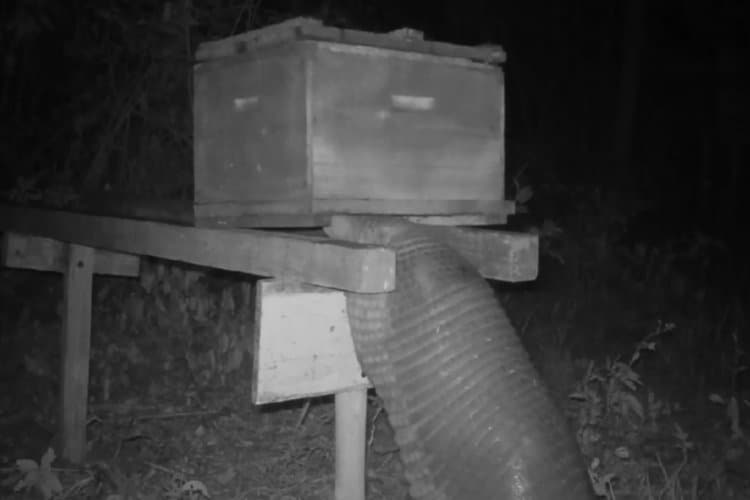
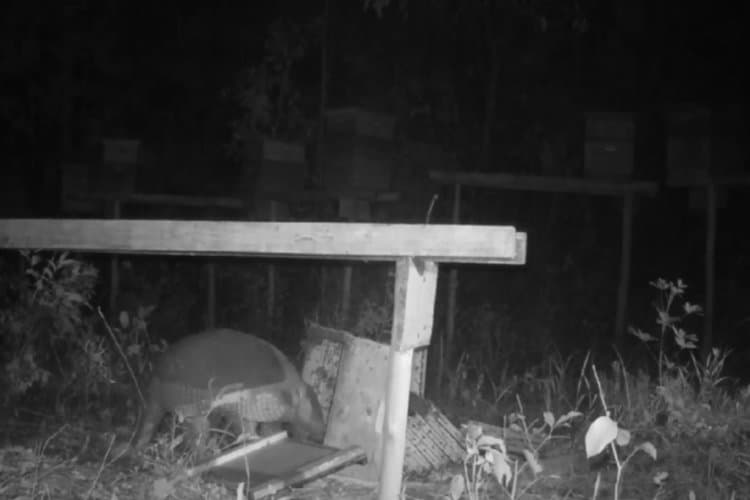
Armadillo-beekeeper conflicts
Desbiez first heard about the giant armadillo and beekeeper conflict in 2015 during a field expedition in the Brazilian Cerrado savanna. The Cerrado is a biome that is highly fragmented, having been deforested at a rate of 2.5 times higher than its neighboring biome, the Amazon Rainforest. More than half of the Cerrado has been transformed into swaths of eucalyptus, soybean and sugar cane monocultures or pastures for cattle.
The remaining fragments of native vegetation are shared by both armadillos and beekeepers who place their hives close to Cerrado flowers. It’s this habitat overlap that leads to wildlife-human conflicts. In a 2020 study, researchers surveyed 178 beekeepers — 53% of whom have more than half their income sustained from beekeeping — in the Cerrado and found that 46% of them reported giant armadillos had damaged their hives in the previous 12 months, creating financial losses of at least 518,000 reais ($103,600 at the time).
The same study found that giant armadillos can topple and break apart up to five hives in one night. One beekeeper lost 120 hives in two weeks, while another lost 460 hives (the equivalent of 230,000 reais or $46,000) during his 14 years as a beekeeper. Others had to abandon specific areas where they produced honey due to conflicts, and some beekeepers told of colleagues who gave up on apiculture altogether after experiencing significant economic losses from destroyed hives.
The giant armadillo is the largest of all armadillo species, growing up to 1.5 meters (4.9 feet) long and weighing up to 60 kilograms (132 pounds). The camera traps reveal they stand up on their hind legs and push up to 35-kilogram (77-pound) hives with their head and nose, resisting the stings from the swarms of angry bees, thanks to their thick skin and protective armor.
The loss of livelihood has led to some beekeepers poisoning armadillos to prevent them from attacking the hives, which can have a devastating impact on the armadillo populations. Armadillos have just one pup every three years and only reach sexual maturity at 7-8 years old. As a result, the “loss of a single individual can have significant impacts on populations,” according to a 2021 study.

Getting certified
As part of the Armadillo & Honey Project, Desbiez uses monitoring, research and education to develop the armadillo-friendly honey that supports both giant armadillo conservation and the beekeepers’ livelihoods. To get the certificate, beekeepers must adopt specific mitigation measures, such as using elevated stands or electric fencing with underground barriers to prevent armadillos from tunneling through. The 1.3-meter- (4.3-foot-) high stands have proven to be the most effective, Desbiez said, as they are low-cost and can be made with easy-to-access materials. The beekeepers also promise to commit to other sustainable practices, such as adopting safety measures when using smoke to avoid fire risks and no deforesting.
“Beekeepers are a very special stakeholder. They are people that love nature,” Desbiez said. “They depend on wildflowers and pristine nature. They are much more willing to coexist with wildlife.”
By collaborating closely with beekeepers, Desbiez has helped issue more than 100 certificates throughout the Cerrado in Mato Grosso do Sul and is now working to help beekeepers in the Amazon Rainforest region also looking to prevent giant armadillos from attacking their hives. “These conflicts are always in areas where the habitat has been quite altered,” Desbiez said. “In the Pantanal, this doesn’t happen because the habitat is more pristine.”
Once unable to eat the bee larvae, the giant armadillos go back to finding ants and termites to feed on. “Preventing [them from eating larvae] doesn’t decrease or harm them in any way,” Desbiez said. “It just enables them to coexist with the beekeepers.”
Protecting the giant armadillos helps support other species in both the Cerrado and the Amazon regions. The giant armadillo is known to dig 5-meter- (16-foot-) deep burrows that provide shelter from predators and the regions’ extreme heat for more than 20 other types of species, including peccaries (small wild pigs), ocelots and anteaters. A 2013 study referred to the giant armadillo as “an ecosystem engineer” that “may be of high value to the community of vertebrates.”

Managing mitigation efforts
The mitigation measures must be managed carefully to ensure the methods employed to prevent giant armadillos from attacking beehives work successfully. “If you find a solution, beekeepers are happy to coexist,” Desbiez said. “However, research shows that beekeepers who’ve tried several unsuccessful methods start to get frustrated and that’s when retaliation is possible.”
A 2021 study analyzed the severity of conflicts between giant armadillos and beekeepers using a human-wildlife interaction framework. The study found that the conflicts are a level one, the least severe type, which “means the negative relation between beekeepers and giant armadillos is still not rooted in less visible, more complex social disagreements, but founded in a material dispute: destruction of beehives.”
The study also found that “on average, beekeepers had favorable attitudes toward giant armadillos.” As the conflicts stem from purely economic reasons, they tend to be easier to resolve. In comparison, jaguar and rancher conflicts in the Brazilian Pantanal are more complex due to a long history of big cat persecution in retaliation for cattle predation and a deep-rooted perception of them as pests, ranking them a “level three conflict,” Desbiez said.
“When the conflict increases, it becomes a conflict that also has social values, where people already dislike the animal beyond the specific conflict,” he said. “There are negative social values that jaguars are bad. We’re very lucky that with giant armadillos we do not have that [perception].”
Where the mitigation methods are in place and the certificates have been issued, the beekeeper and armadillo relations have significantly improved both in the Cerrado and the Amazon, and revenge killings have stopped. “We are living peacefully with them today,” Adames said. “They are not disturbing the hives any more. Everything is going well.”
Citations:
Paschoaletto Micchi de Barros Ferraz, K. M., Gomes de Oliveira, B., Attias, N., & Desbiez, A. L. (2021). Species distribution model reveals only highly fragmented suitable patches remaining for giant armadillo in the Brazilian Cerrado. Perspectives in Ecology and Conservation, 19(1), 43-52. doi:10.1016/j.pecon.2021.01.001
Desbiez, A. L., Oliveira, B., & Catapani, M. (2020). Bee careful! Conflict between beekeepers and giant armadillos (Priodontes maximus) and potential ways to coexist. Edentata. doi:10.2305/IUCN.CH.2020.Edentata-20-1.2.en
Desbiez, A. L., & Kluyber, D. (2013). The role of giant armadillos (Priodontes maximus) as physical ecosystem engineers. Biotropica, 45(5), 537-540. doi:10.1111/btp.12052
Catapani, M. L., Morsello, C., Oliveira, B., & Desbiez, A. L. (2021). Using a conflict framework analysis to help beekeepers and giant armadillos (Priodontes Maximus) coexist. Frontiers in Conservation Science, 2. doi:10.3389/fcosc.2021.696435
This article by Sarah Brown was first published by Mongabay.com on 14 July 2023. Lead Image: The giant armadillo is the world’s largest of the armadillo species, reaching up to 1.5 meters (4.9 feet) long and weighing up to 60 kilograms (132 pounds). Image courtesy of Andre Borges/Agência Brasília (CC BY 2.0).
What you can do
Support ‘Fighting for Wildlife’ by donating as little as $1 – It only takes a minute. Thank you.
Fighting for Wildlife supports approved wildlife conservation organizations, which spend at least 80 percent of the money they raise on actual fieldwork, rather than administration and fundraising. When making a donation you can designate for which type of initiative it should be used – wildlife, oceans, forests or climate.


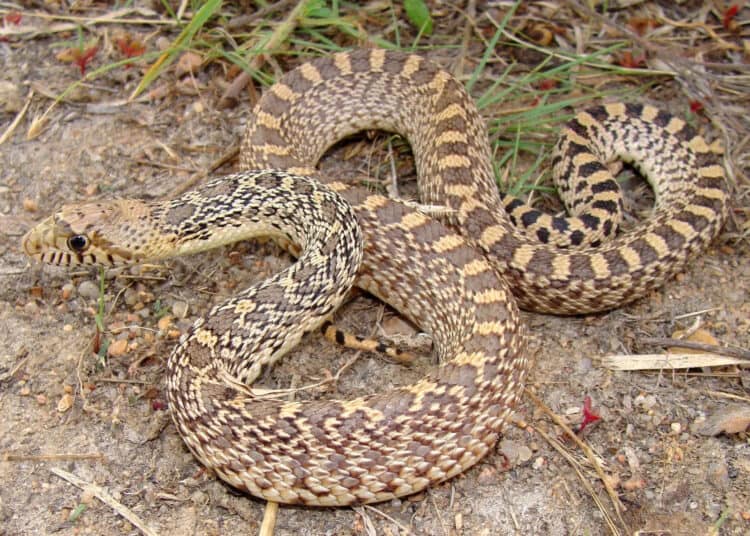
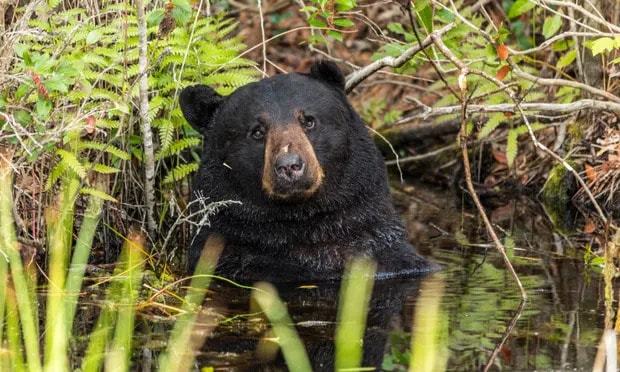
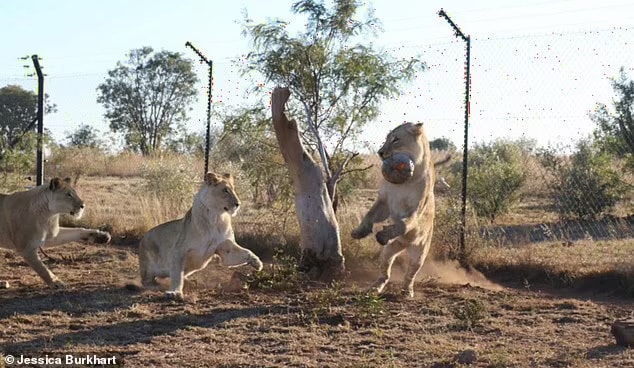
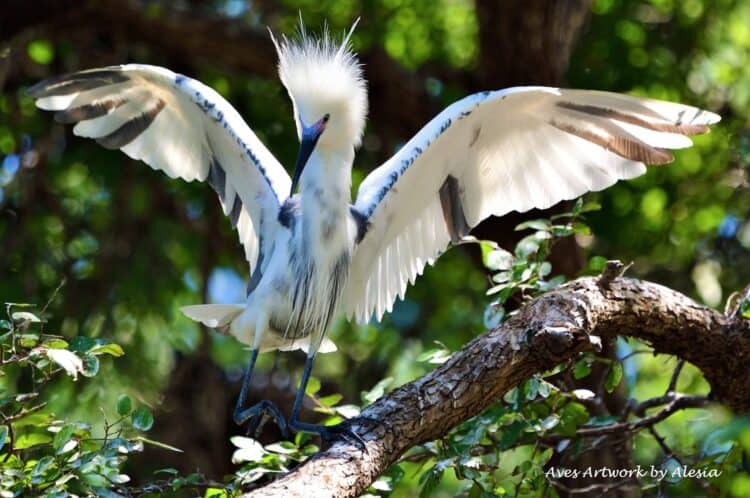
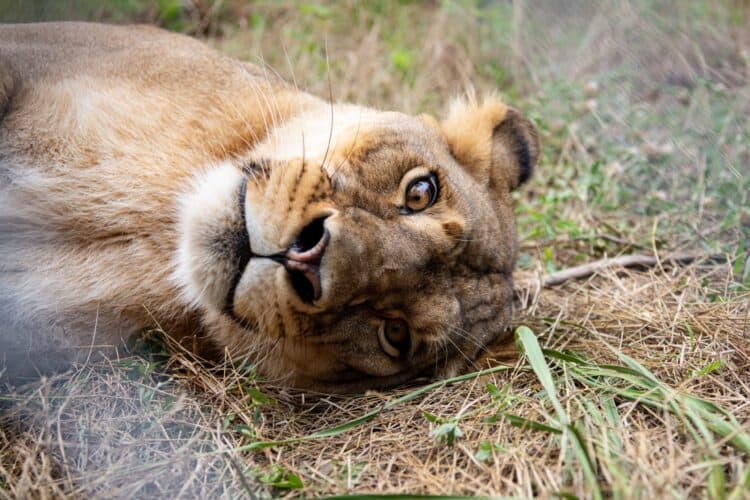
Leave a Reply